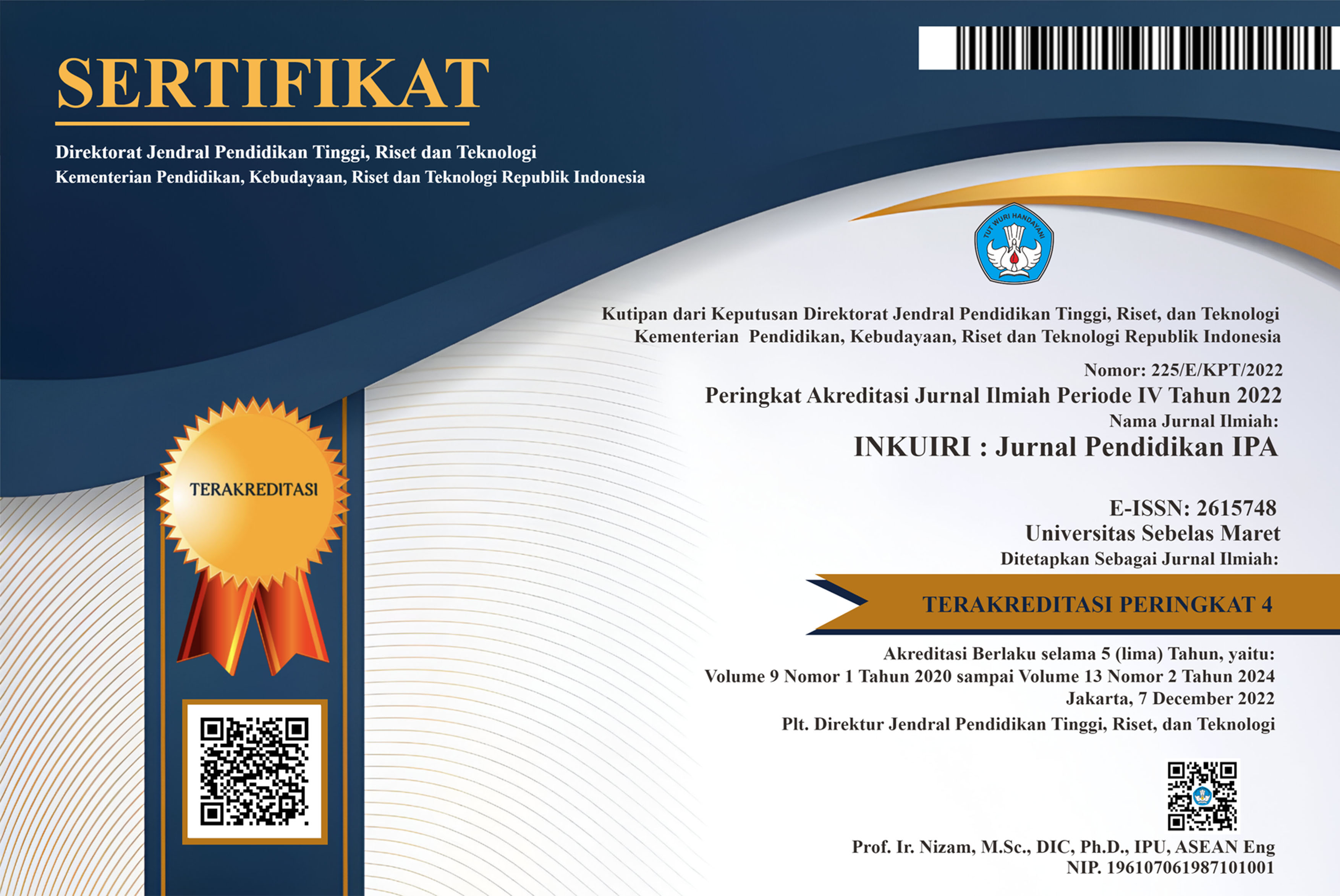SISTEM NAVIGASI MAKLUK HIDUP: MENAKISME PENJELAJAHAN SECARA ALAMIAH (IMPLEMENTASI STRATEGI PEMBELAJARAN TEMATIK PADA MATERI INDUKSI ELEKTROMAGNETIK)
Abstract
Kompetensi Dasar 3.6 Kelas IX memberi tantangan bagi guru sains untuk mengelaborasi konsep sains secara terpadu. Pada kompetensi dasar tersebut konsep fisika tentang elektromagnetisme digabungkan dengan konsep biologi tentang sistem navigasi. Melalui studi literatur terhadap berbagai jurnal ilmiah, artikel ini bertujuan untuk mengkaji bagaimana konsep listrik dan magnet memiliki peran penting dalam peristiwa pergerakan/navigasi beberapa jenis hewan. Kajian ini juga diperluas terhadap hewan-hewan yang melakukan navigasi menggunakan gelombang bunyi. Secara lebih terperinci, tujuan artikel ini adalah untuk menganalisis bagaimana mekanisme berbagai jenis hewan melakukan migrasi dikaitkan dengan beberapa konsep fisika berupa kelistrikan, kemagnetan, dan gelombang bunyi.
Basic Competence 3.6 Class IX presents a challenge for science teachers to elaborate science concepts in an integrated manner. In these basic competencies, the physics concept of electromagnetism is combined with the biological concept of navigation systems. Through literature studies of various scientific journals, this article aims to examine how the concepts of electricity and magnetism have an important role in the movement/navigation of several types of animals. This study was also extended to animals that navigate using sound waves. In more detail, the purpose of this article is to analyze how the mechanism by which various types of animals migrate is related to several physical concepts in the form of electricity, magnetism, and sound waves.
Keywords
Full Text:
PDFReferences
Dormy. (2006).The origin of the Earth's magnetic field: Fundamental or environmental research? Europhysics news 37(2):22-25
Dreyer et al,. (2018). The Earth’s Magnetic Field and Visual Landmarks Steer Migratory Flight Behavior in the Nocturnal Australian Bogong Moth. Current Biology Volume 28, Issue 13, 9 July 2018, Pages 2160-2166.e5
Fields, Douglas. (2007).The Sharks Electrics Sense: An astonishingly sensitive detector of electric fields helps sharks zero in on prey. SCIENTIFIC AMERICAN, INC
Fogarty and Pete (2010). How to Integrate the Curricula. Heidi Hayes Jacobs Publishers.
Foley, et al. (2011).Human cryptochrome exhibits light-dependent magnetosensitivity. Nature Communications volume2, Article number: 356 (2011)
Hopkins. (2010). A biological function for electroreception in sharks and rays. Journal of Experimental Biology 213(Pt 7):1005-7
Serway & Jewett. (2004). Physics: For Scientists and Engineers 6TH EDITION. Brooks/Cole Publishing Co
Taylor. (2016). Validating a model for detecting magnetic field intensity using dynamic neural fields. Journal of Theoretical Biology Journal of Theoretical Biology 408 (2016) 53–65
Victor V. Klemas, (2013),"Remote sensing and navigation in the animal world: an overview", Sensor Review, Vol. 33 Iss: 1 pp. 3 – 13
Young & Freedman. (2016). University Physics with Modern Physics, 14th Edition. California: Pearson
Refbacks
- There are currently no refbacks.






